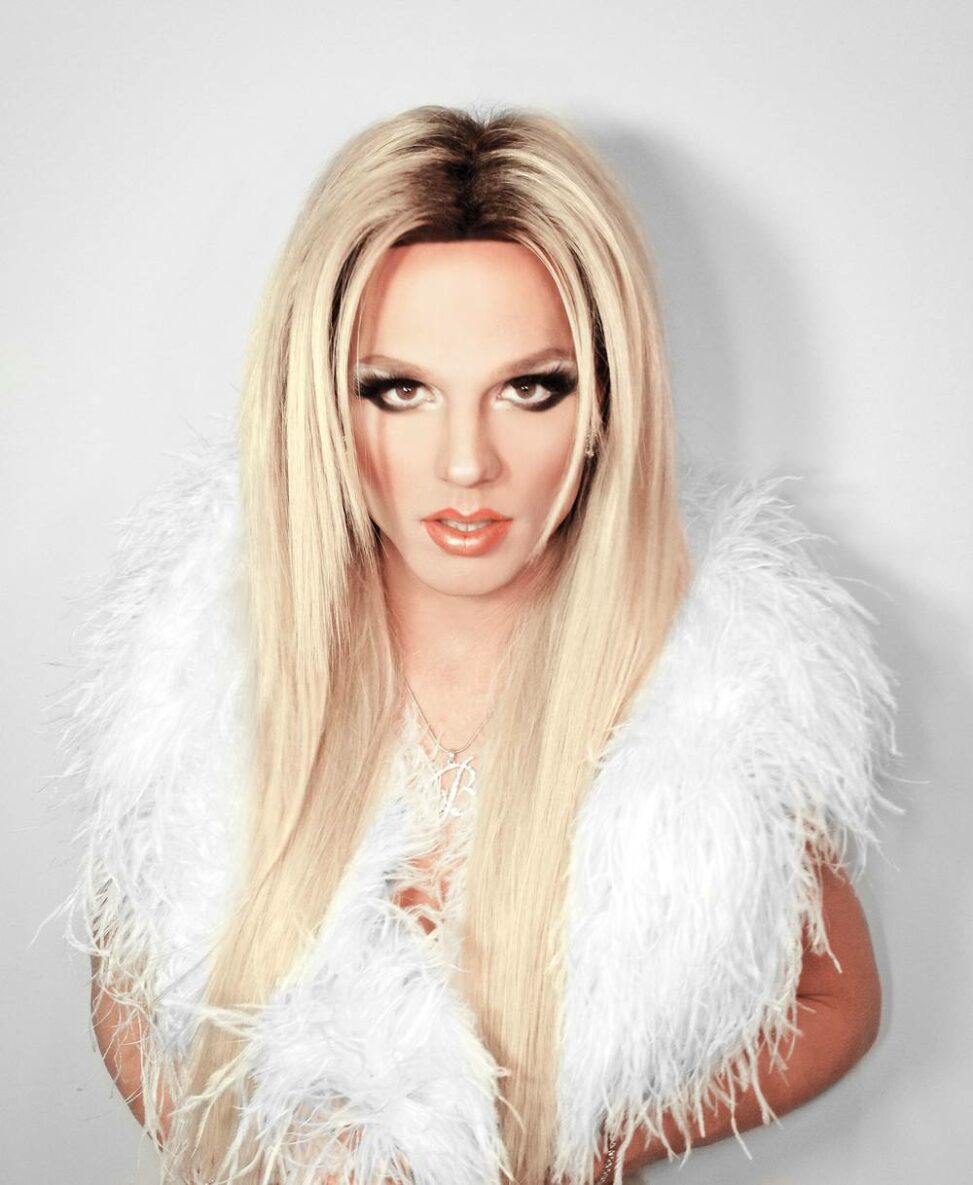Image Attribution: “Assignment 2, Part A – Cosplay Characters” by Nicole Favron is licensed under CC0. (See interactive map)
Assignment 2, Part A – Cosplay Characters
Created by: Nicole Favron
Derrick Barry is an American drag performer who is best known for his Britney Spears impersonations, and his reality television presence. Barry competed on the third season of America’s Got Talent, the eighth season of RuPaul’s Drag Race, the fifth season of RuPaul’s Drag Race All Stars, and has performed on the Las Vegas Strip for over 15 years. In the eighth season of RuPaul’s Drag Race, Barry was criticized for his continuous use of Britney Spears inspired looks. In a competition that encourages individuality and creativity, some felt that falling back on an impersonation that Barry was already comfortable with was lazy work and lacked any type of unique charm. The subject of his performance, Britney Spears, is an American pop singer who gained notoriety in the late 1990s, and has remained in the media for various reasons since then. Spears is a sex icon, pop artist, and an identifiable choice for any type of cosplay. She is a powerful figure in popular culture, who inspires many to embrace their femininity and sexuality. For Derrick Barry, Britney is a smart choice; Berry takes advantage of physical similarities to the singer to convince his audience and enhance his performance. To make the transformation, Barry uses a wig, makeup, and identifiable clothing, that all help signify to people whom they are now observing. Barry goes as far as to learn the popstar’s choreography, bringing physicality into the performance. Through cosmetic contouring and iconic Britney outfits, Barry stands out as an impressive impersonator. When getting into character, Barry first applies foundation, contours, and highlights. This visually changes the shape of the face and allows what he may identify as his Britney-like features to shine through. After some bold eyeshadow and fake lashes, Barry finishes off the makeup look with a bright coral lip, that is reminiscent of the early 2000s; it takes around forty-five-minutes to do the makeup from start to finish. “This is someone that really has the entire package,” says Barry, “she’s singing, she’s dancing, she’s beautiful, she is incredibly marketable when it comes to being just so down to earth” (Derrick Barry-Celebrity Female Impersonator-Documentary, 2013). It can be assumed that this is what draws Barry to this character. Like many others, Barry has been entranced by the popstar’s charisma, style, and beauty.
The drag community faces much controversy when it comes to feminist discussions and 2SLGBTQ+ rights and liberations. For many, the drag community is a safe place for those who wish to express their gender identity. Drag is an outlet that allows participants to display either femininity or masculinity in a fun stylized way. However, because drag appropriates gender displays, “some scholars view drag queens as primarily reinforcing dominant assumptions about the dichotomous nature of gender presentation and sexual desire” (Rupp, Leila J., et al, 277). Many feel that despite their performance of femininity, these drag queens also embody masculine privilege. Others argue that these performances “destabilize gender and sexual categories by making visible the social basis of femininity and masculinity, heterosexuality and homosexuality, and presenting hybrid and minority genders and sexualities” (qtd. in Rupp, Leila J., et al, 277). In this instance, when Derrick Barry uses his Britney Spears impersonations, he is using hyper femininity to reimagine himself. Gender performances done in this way expose “the socially constructed nature of femininity and masculinity,” which also reconfirm heteronormativity (Leng 97) and uphold harmful stereotypes.
Works Cited:
Haverty , Hartley. “Derrick Barry – Celebrity Female Impersonator – Documentary.” YouTube, 31 Oct. 2013, https://www.youtube.com/watch?v=F9XUzlOCaK4.
Leng, Rachel Hui Ying. “Gender, Sexuality, and Cosplay: A Case Study of Male-to-Female Crossplay.” The Phoenix Papers, Apr. 2013, https://dash.harvard.edu/handle/1/13481274.
Rupp, Leila J., et al. “Drag Queens and Drag Kings: The Difference Gender Makes.” Sexualities, vol. 13, no. 3, 2010, pp. 275–294., https://doi.org/10.1177/1363460709352725.
